

William Stopford
Every SUV, ute and van discontinued in Australia in 2025
2 Hours Ago
EVs have been thin on the ground for Toyota, but that's all about to change as the brand begins its all-electric rollout.
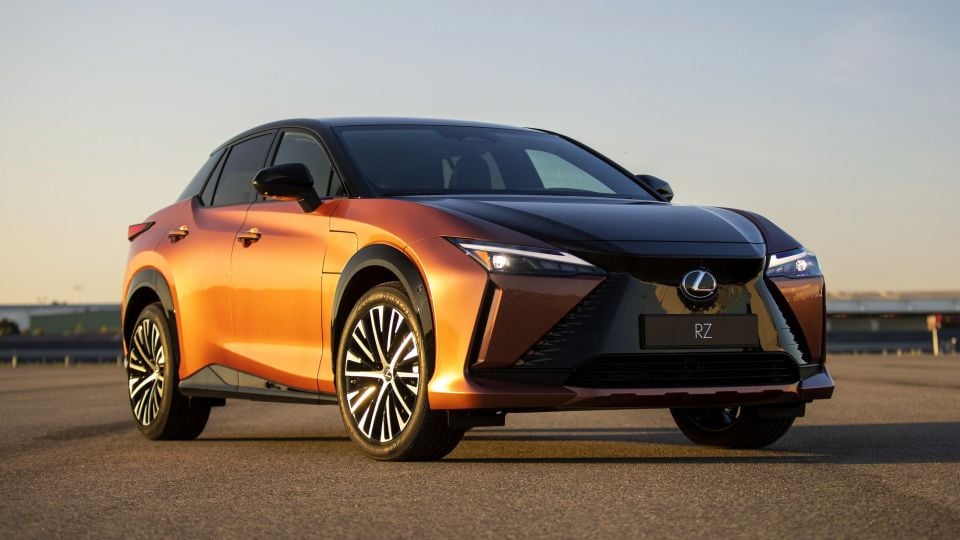
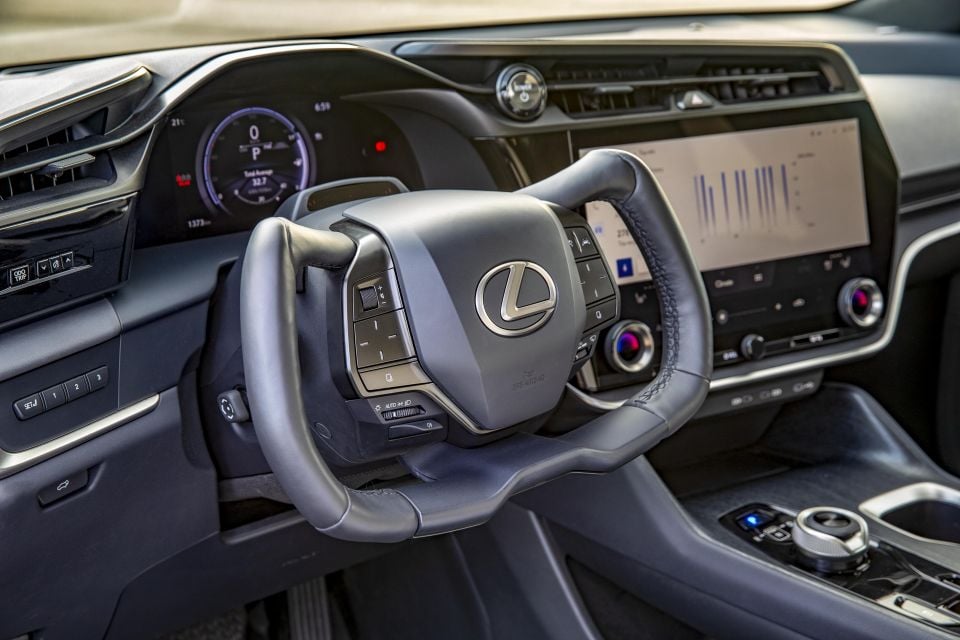

Quickly see how this car stacks up against its competition. Select any benchmark to see more details.
Where expert car reviews meet expert car buying – CarExpert gives you trusted advice, personalised service and real savings on your next new car.
While Toyota dominates the hybrid vehicle race, it has been slow to the game on full-electric vehicles.
And, by extension, Lexus is in the same boat. But, that’s all slowly changing. Toyota wants to be selling 3.5 million electric vehicles by 2030, with around 1 million of those being Lexus-badged vehicles.
So, it was only fitting that we got behind the wheel of Lexus’s first full-electric vehicle on a dedicated EV platform; it’s called the Lexus RZ and it’ll be launching in Australia in 2023.
It’s worth pointing out the vehicle we had a chance to drive was a left-hand drive hand-built prototype, so take the fit and finish of some items with a grain of salt.
Pricing is yet to be announced, but as a guide, the Toyota bZ4x is priced from US$42,000 in the US. That’s around $65,000 in Australia.
The Lexus will be a more premium offering with all the bells and whistles that come with owning a Lexus. In addition to that it’ll be quicker and more powerful in comparison to the Toyota counterpart it shares its e-TNGA platform with.
So in saying that, it’s safe to say it’s likely going to be a circa $100,000 proposition in Australia – but where it lands is yet to be determined.

Buy your new car without the stress. It's fast, simple and completely free.

Great service from Travis and team, second time I have used this business would not hesitate to recommend them to anyone
Craig C.
Purchased a Ford Ranger in Sunshine Coast, QLD
CarExpert helped Craig save thousands on his Ford Ranger, now let us save you on your next new car.
Find a dealLet’s start off with the elephant in the room, the yoke. Just like the new Tesla Model S, the Lexus RZ will be available with the topless steering wheel in Australia.
But, unlike the Tesla Model S, the Lexus RZ yoke is a steer-by-wire system. That means there’s no direct mechanical connection to the wheels from the steering wheel like you’d find in a traditional car.
In addition to that, the steering input required is around a fifth of what you’d find in a typical car. That is, 150 degrees of rotation will see you move from lock-to-lock, in comparison to around 540 degrees in a typical car.
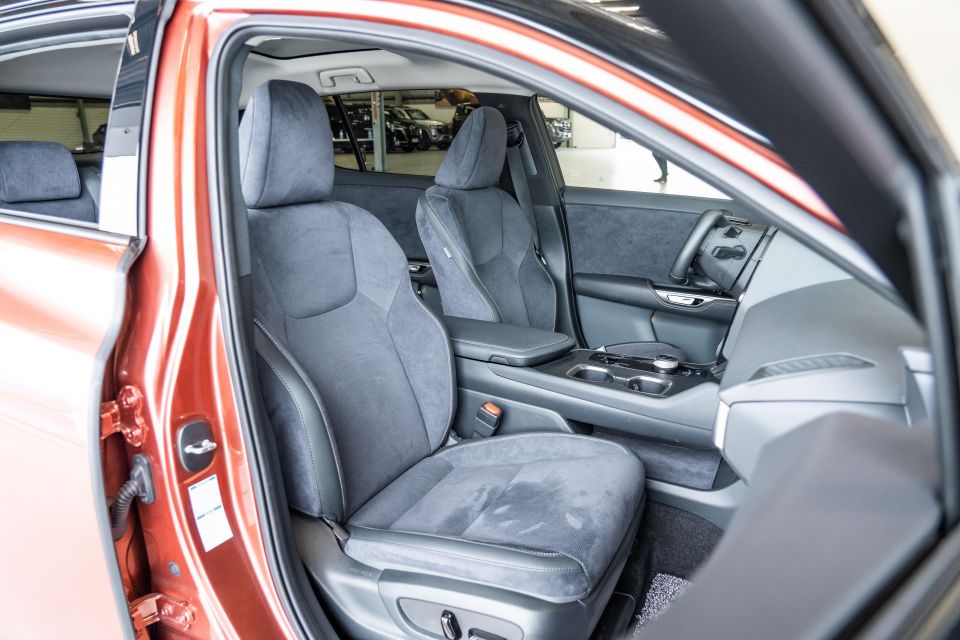
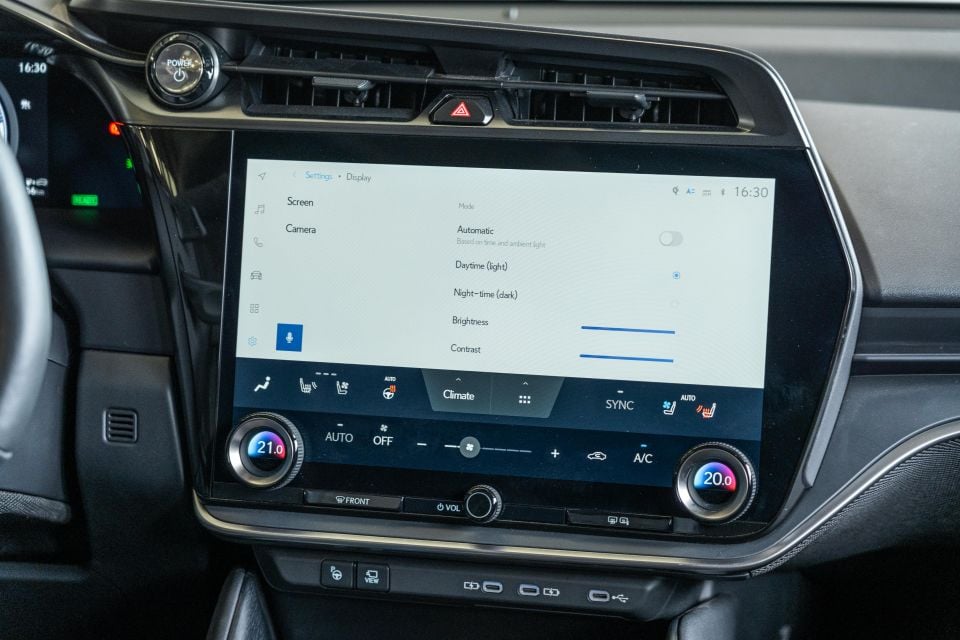
When you think about it, it makes a whole lot more sense. The steering wheel was originally a direct mechanical link between the steering wheel and the wheels. Every input you made was transferred to the wheels.
Then we had power-assisted steering, then variable-ratio steering, then electrically-assisted steering and now wireless steering. So, why do you need to actually input so much steering effort to do something that’s technically not required any longer?
I’ll run through whether it works or not a little later. But in addition to the steer-by-wire system, the wheel also features controls for the wipers, headlights and critical vehicle functions.
The interior is fully vegan, while the roof is electrically charged to allow an almost instant transition between transparent and translucent like the BMW iX. Infotainment comes in the form of a 14-inch infotainment system that features wireless Apple CarPlay and Android Auto, along with AM/FM and DAB+ digital radio.
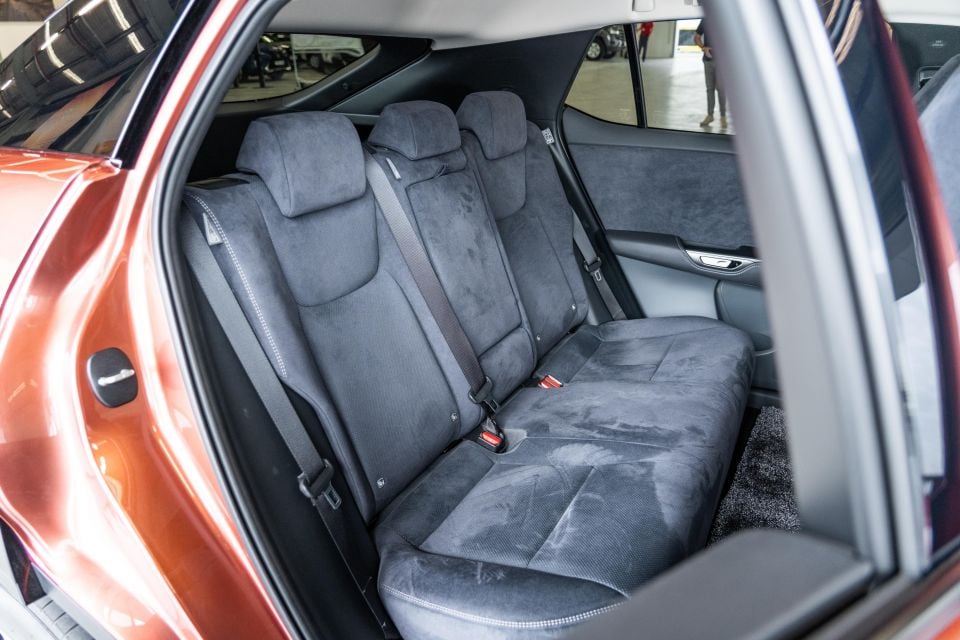
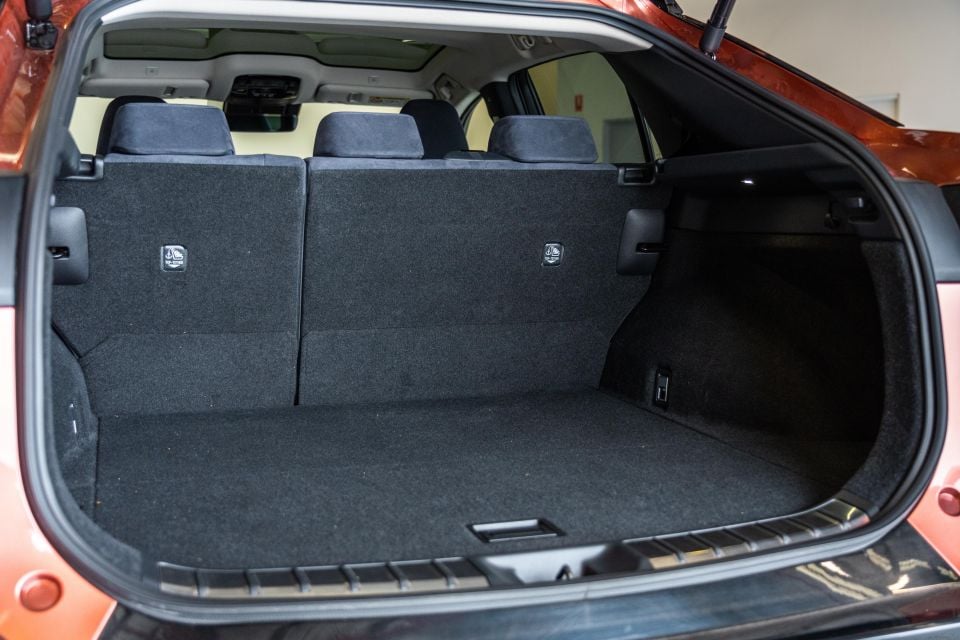

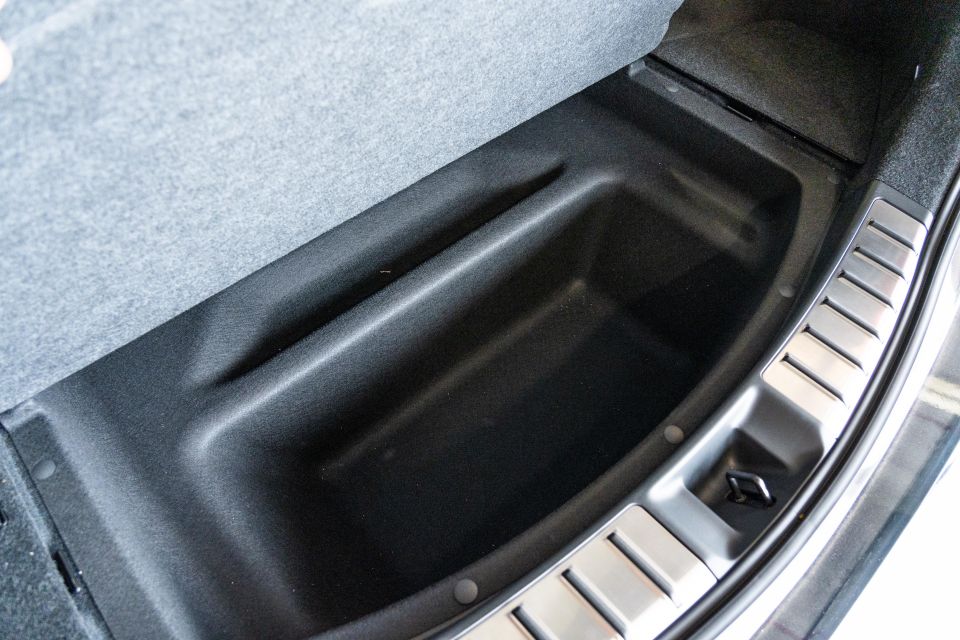
Like a number of other ground-up EVs there’s plenty of storage. Both in the centre console and beneath the floating portion of the centre console. Strangely, you won’t find a globe box here.
Connectivity comes in the form of USB-C, including wireless phone charging.
The second row offers a surprising amount of room (given the long wheelbase) in terms of knee and headroom. Toe room is a little cramped – as is often the case with EVs given the sub-floor is used for battery storage.
We didn’t have an official boot capacity, but it feels big. It’s even complemented with a huge amount of storage beneath the cargo floor (not dissimilar to the Tesla Model Y). The second row also folds almost completely flat to accommodate the loading of larger items.

The Lexus RZ we drove was the 450e specification with Direct4 – Lexus’s all-wheel drive EV designation.
The system features two electric motors – one on the front axle and one on the rear. They combine to produce 230kW of power (split between 150kW at the front and 80kW at the rear). They’re powered by a 75kWh battery (71.4kWh usable) with a 450km WLTP targeted driving range.
Charging comes in the form of 11kW AC charging (single- and three-phase), while DC charging is available at up to 150kW. We’ll have to see what the charge profile looks like in action, but it falls a little short of what we’ve seen from other brands making similarly sized vehicles in the segment.
The Drive4 system can send up to 100 per cent of torque to the front or rear axle depending on the situation. Lexus calls the motors eAxles due to it integrating the transaxle and inverter. These can then feed off each other to prevent pitch associated with accelerating hard.
Under the bonnet you won’t find any storage, it’s just the electrical components for the drive system, a variable strut tower brace, along with the front motor.
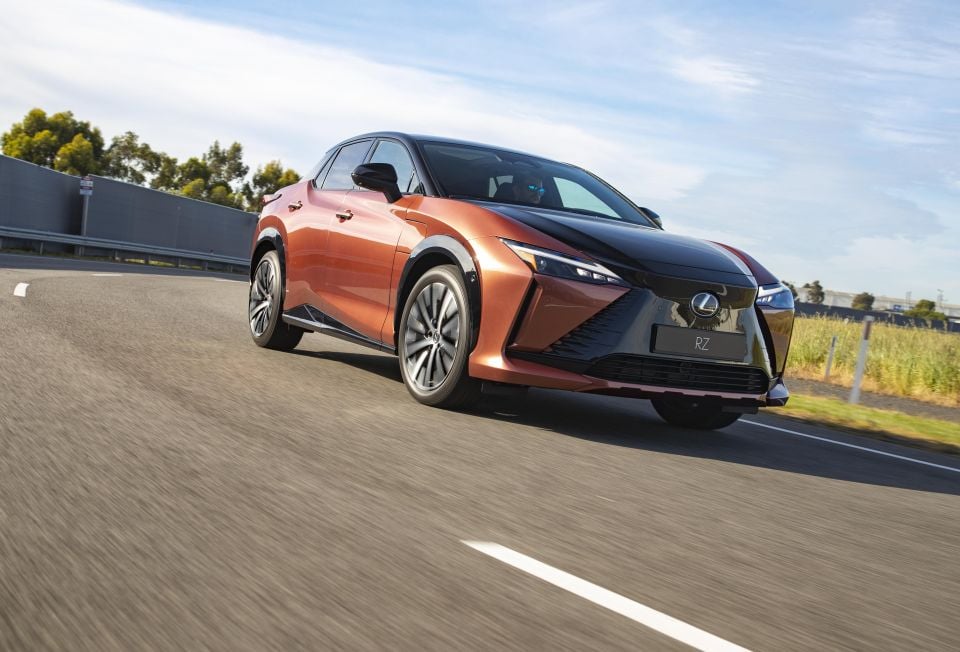
At low speeds, the Lexus RZ feels like most other EVs to drive. It’s quiet, responsive and offers progressive acceleration.
Four regen modes allow the driver to move between modes using paddle shifters mounted to the steering wheel.
Unfortunately, it didn’t look like there was a single-pedal driving mode, which is a shame given it has now been progressively rolled out amongst a big portion of EVs on the market.

Now, what about that yoke? It’s an absolutely bizarre experience, but in a good way. You can turn lock-to-lock with barely any steering input, and at low speeds it means things like parking are a breeze because you don’t need to go hand-over-hand when rotating the wheel.
As speeds pick up, it takes a little while to get used to the yoke and how it interacts with the car. There’s limited sensation through the yoke itself – simply because there’s no direct mechanical connection – but Lexus does introduce feedback and feel through the wheel courtesy of a motor attached to the yoke itself.
It seems to work well because you feel everything on the road’s surface through the seat, but don’t get any of that unwanted kickback you typically get with a mechanical rack.
We’re looking forward to having a proper drive of the production version given our time behind the wheel was limited to Toyota Australia’s test track in Altona, which has a pretty sedate surface. It was also bucketing down during our time behind the wheel!
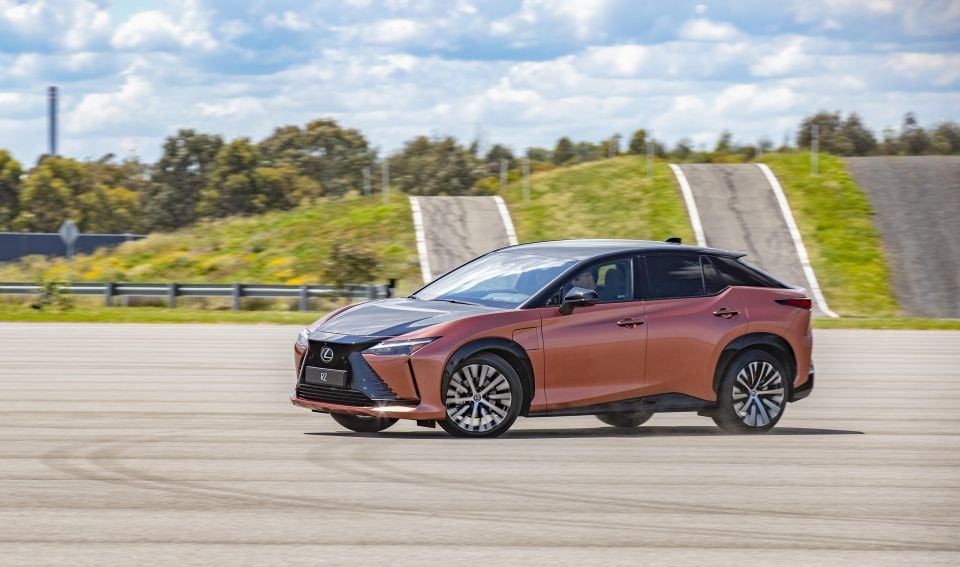
Outside of the yoke, the rest of the package feels excellent. It’s very quiet with limited tyre noise, while ride comfort is excellent thanks to adaptive damping. Again, it was only a short drive on a smooth surface, but initial impressions are good.
Lexus claims an 0-100km/h acceleration time of under 6.0 seconds. It feels punchy off the line, especially in Sport mode, and offers an engaging feel through corners.
The body sits fairly flat through bends and the rapid nature of the steering means it tucks in nicely through tighter corners – although you need to be careful how quickly you apply steering lock given how fast the rack is.

While our first drive of the all-new Lexus RZ was brief, it was a fascinating introduction to the yoke and Toyota’s interpretation of an electric vehicle.
On face value it feels engaging and fun to drive. Its success will be dictated by price and how well Toyota follows the bZ4x and Lexus RZ up with other models at other price points.
We’re looking forward to a proper drive on our test roads when this vehicle finally goes on sale in Australia in mid-2023.

Click the images for the full gallery
MORE: Everything Lexus RZ
Where expert car reviews meet expert car buying – CarExpert gives you trusted advice, personalised service and real savings on your next new car.
Paul Maric is a CarExpert co-founder and YouTube host, combining engineering expertise with two decades in automotive journalism.


William Stopford
2 Hours Ago


Ben Zachariah
3 Hours Ago


Derek Fung
3 Hours Ago


Matt Campbell
10 Hours Ago


William Stopford
1 Day Ago


Josh Nevett
1 Day Ago